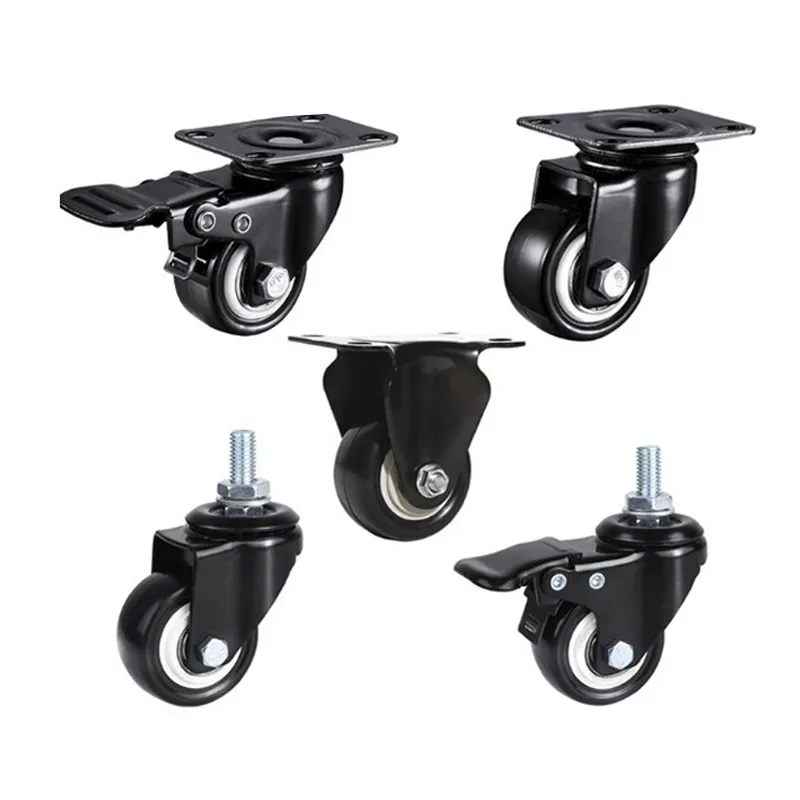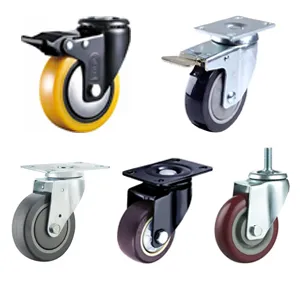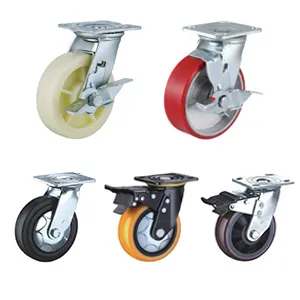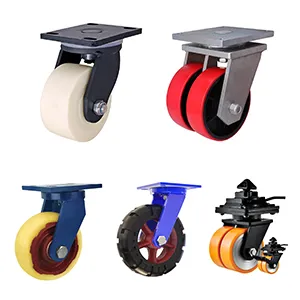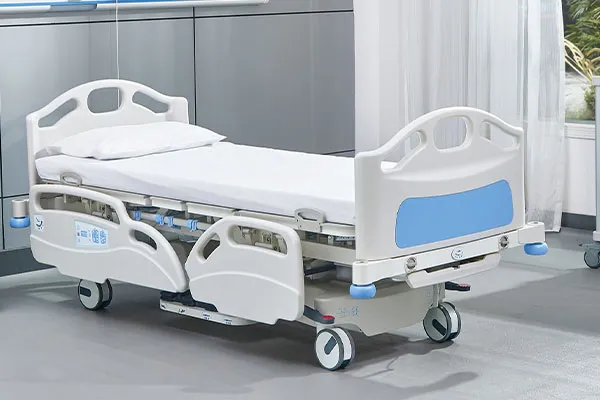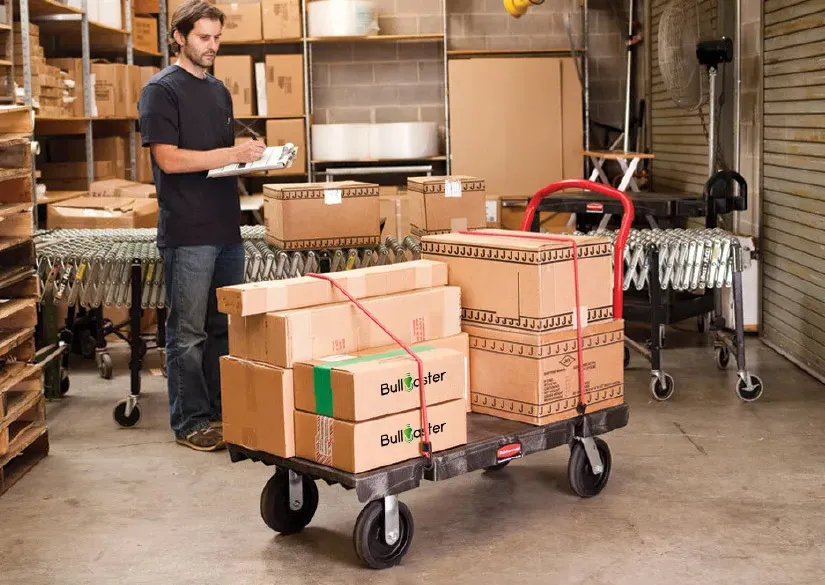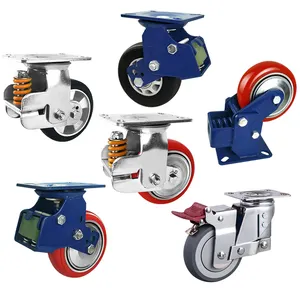ⅰ. 캐스터 소개
캐스터는 무엇입니까?
ㅏ 던지는 사람 더 쉬운 움직임을 가능하게하기 위해 일반적으로 물체의 바닥에 장착 된 휠 장치입니다. 다양한 응용 분야에서 필수적인 Casters는 소형 가구 휠에서 무거운 하중을 지원하도록 설계된 대형 산업 모델에 이르기까지 다양합니다.

캐스터의 개발 역사
캐스터의 역사는 몇 세기에 걸쳐 기술과 재료의 발전으로 발전합니다. 원래 캐스터는 단순한 나무 바퀴 또는 금속 롤러였습니다. 그러나 산업이 발전함에 따라보다 정교하고 내구성이 뛰어난 캐스터의 필요성이 커졌습니다. 산업 혁명은 주철과 고무 바퀴를 도입하여 더 나은 내구성과 바닥 보호를 제공하는 중대한 변화를 나타 냈습니다. 20 세기에 플라스틱과 합성 재료의 출현으로 캐스터들은 더 다양해졌으며 다양한 응용 분야에 적합한 광범위한 유형의 개발로 이어졌습니다.
산업에서 캐스터의 역할
캐스터는 이동성과 효율성을 향상시켜 수많은 산업에서 중요한 역할을합니다. 의료 부문에서 캐스터는 병원 침대, 의료 장비 및 트롤리에 사용되며 환자 치료 및 직원 효율성에 기여합니다. 소매 및 환대에서는 쇼핑 카트, 수하물 트롤리 및 가구에서 발견되어 취급 및 운송이 더 쉬워집니다. 캐스터는 또한 사무실 환경에서 의자와 움직일 수있는 가구에 통합되어 작업 영역 유연성을 향상시킵니다.
캐스터는 많은 부문에서 없어서는 안될 구성 요소가되어 운영 효율성과 인체 공학적 이점에 중요한 이동성 솔루션을 제공합니다. 이 다목적 성은 다양한 유형의 캐스터와 비즈니스 및 소비자 모두에게 필수적인 특정 응용 프로그램을 이해하게합니다.
ⅱ. 캐스터 휠 유형
다양한 유형의 캐스터를 이해하는 것은 필요에 맞는 올바른 것을 선택하는 데 필수적입니다. 캐스터는 휠 표면 재료, 운반 용량, 마운트 방법, 캐스터 브래킷 유형 및 주요 사용 시나리오와 같은 다양한 기준에 따라 분류 될 수 있습니다.
1. 캐스터 휠 재료에 의한 분류
오른쪽 휠 표면 재료를 선택하는 것은 캐스터 성능에 중요합니다. 다양한 재료는 다양한 하중 용량, 바닥 유형 및 환경 조건을 충족시킵니다. 다음은 캐스터 휠에 사용되는 일반적인 재료에 대한 풍부한 모습입니다.
PU (폴리 우레탄)

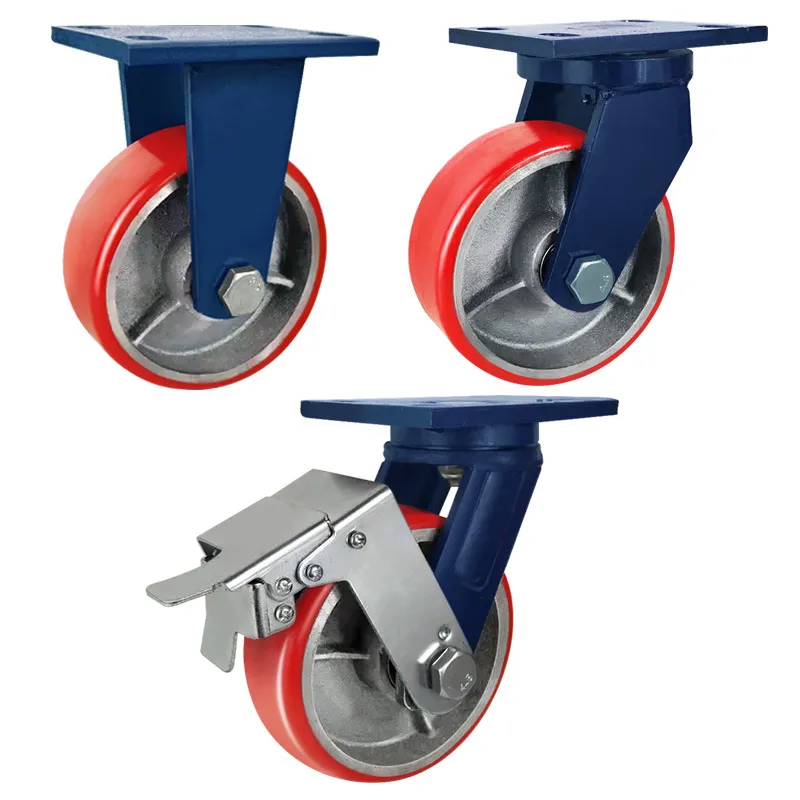

- 형질: 고무의 탄력성과 금속의 강인성을 결합합니다. 탁월한 바닥 보호 및 소음 감소를 제공합니다.
- 응용 프로그램 : 바닥 보호 및 소음 감소가 우선 순위 인 병원, 실험실 및 소매 환경에서 사용하기에 이상적입니다.
- 장점: 많은 화학 물질, 용매 및 오일에 내성이 있습니다. 좋은 그립을 제공하고 마킹이 아닙니다.
나일론
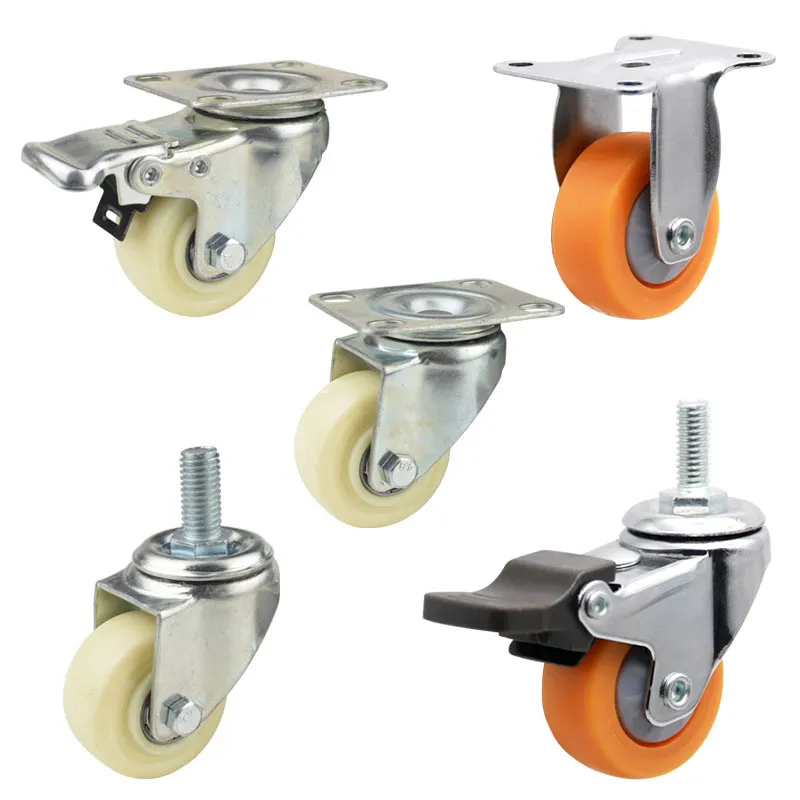
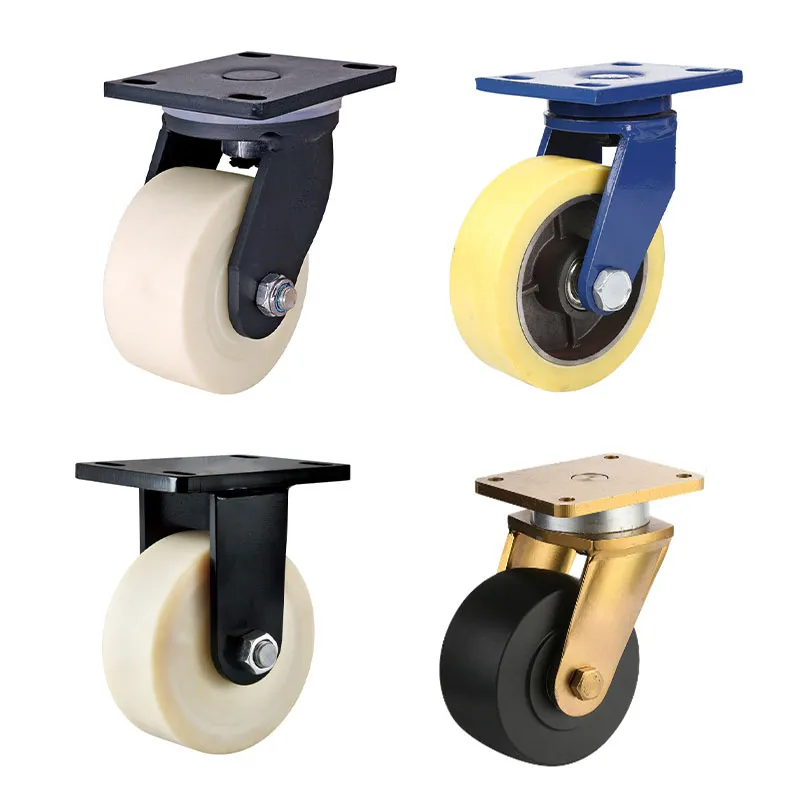
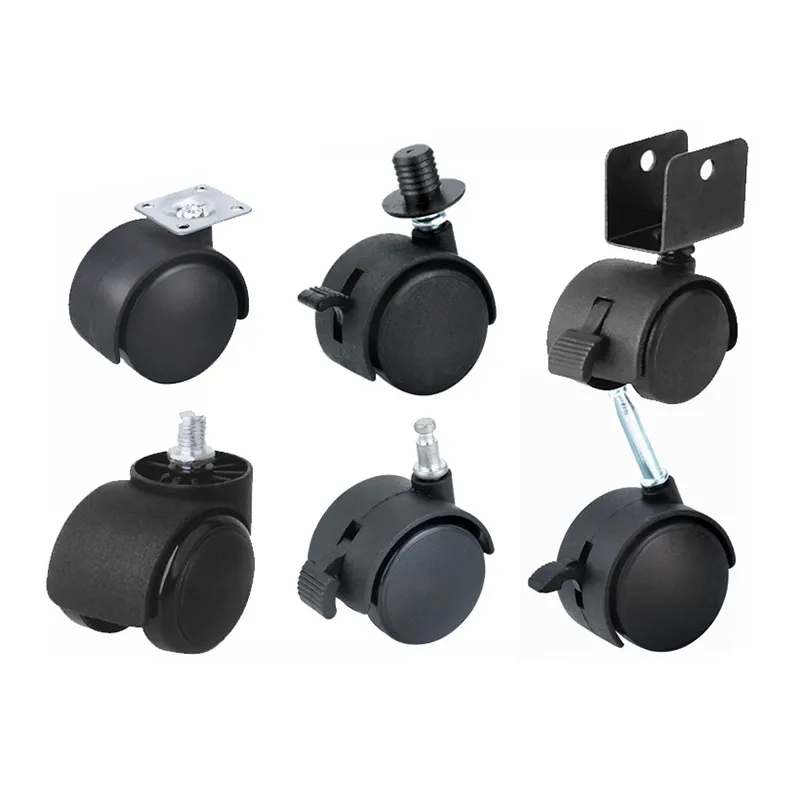
- 형질: 가벼우면서도 강하고 충격 저항이 높습니다.
- 응용 프로그램 : 특히 수분 및 화학 저항이 필요한 실내 및 실외 응용 분야에 적합합니다.
- 장점: 내구성이 뛰어나고 청소하기 쉽고 마모, 마모 및 많은 화학 물질에 저항력이 있습니다.
고무
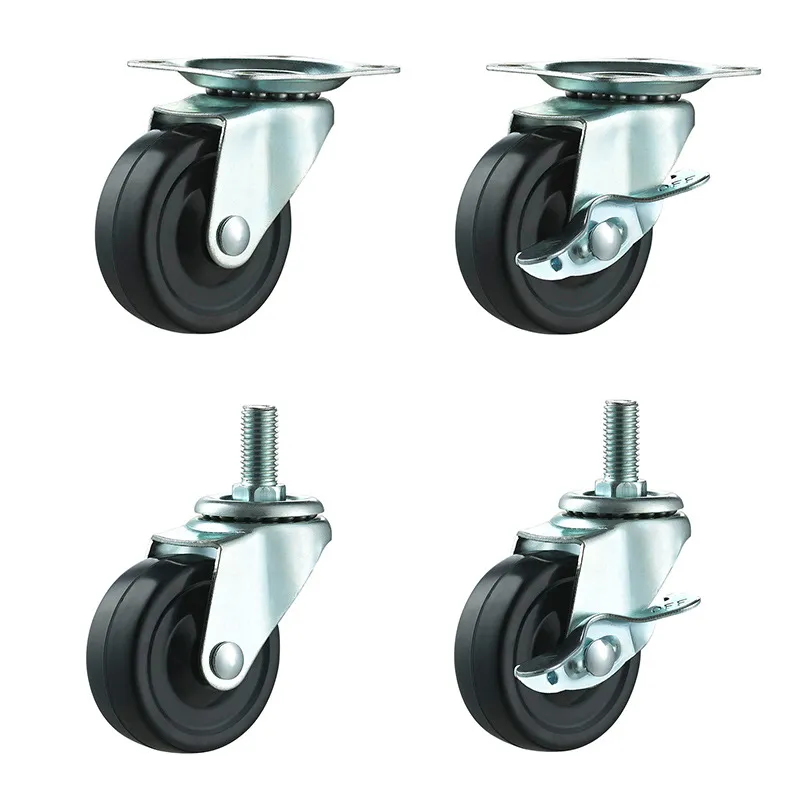
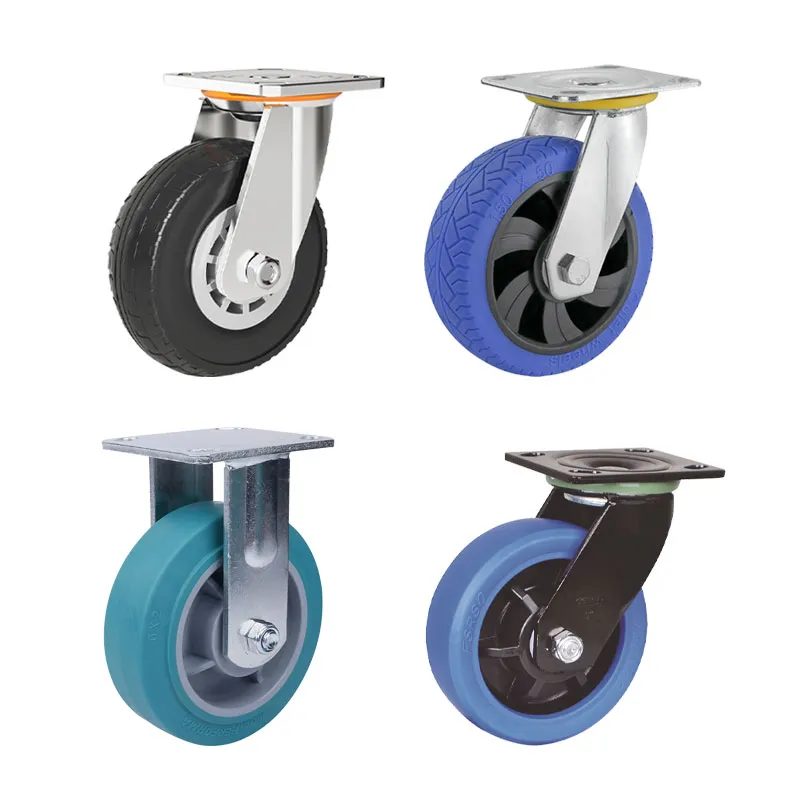
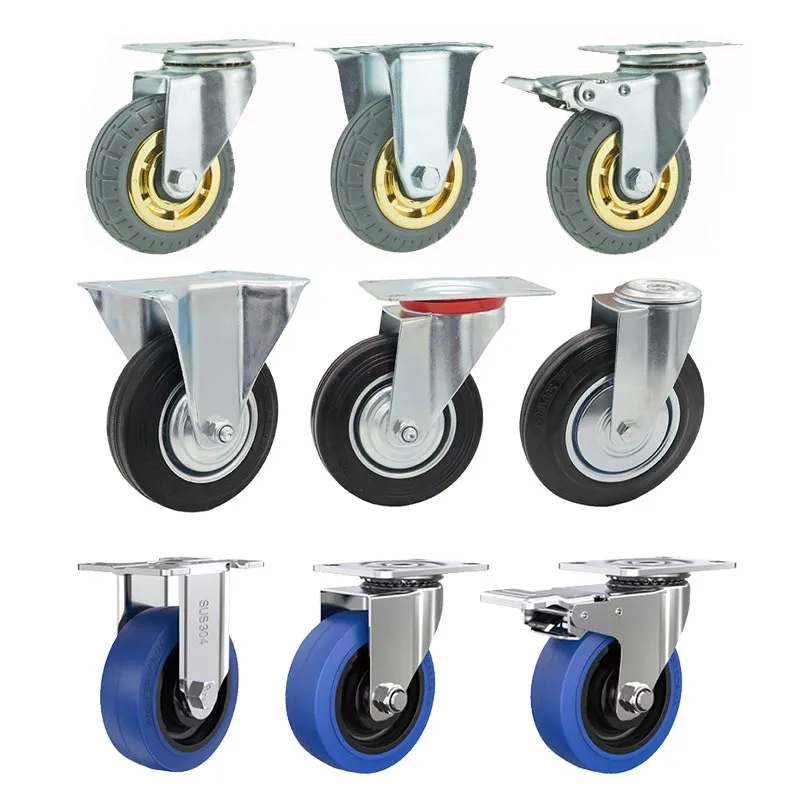
- 형질: 쿠션 및 충격 흡수를 제공하여 바닥에서 부드럽게 만듭니다.
- 응용 프로그램 : 도서관 및 병원과 같은 조용한 운영이 필요한 환경에서 일반적으로 사용됩니다.
- 장점: 젖거나 미끄러운 표면의 슬립 위험을 최소화하는 탁월한 그립과 견인력을 제공합니다.
강철
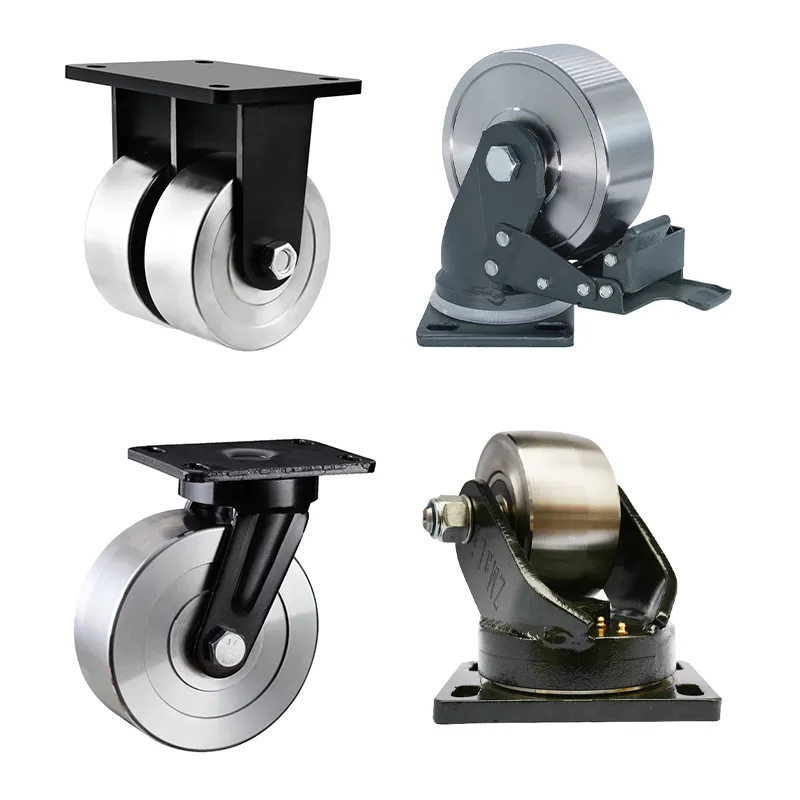
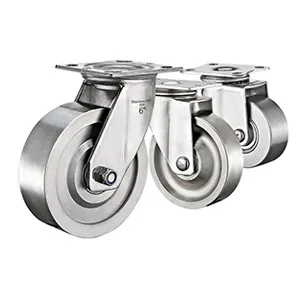
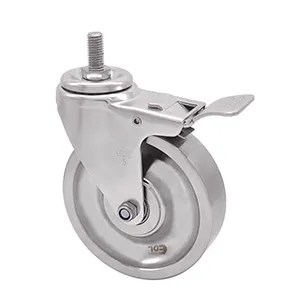
- 형질: 매우 강하고 내구성이 뛰어나고 무거운 하중을 운반 할 수 있습니다.
- 응용 프로그램 : 중장비 또는 장비를 이동 해야하는 산업 환경에 가장 적합합니다.
- 장점: 거칠고 고르지 않은 표면에 매우 탄력적이며 실외 사용 또는 잔해물이있는 환경에 이상적입니다.
스테인레스 스틸
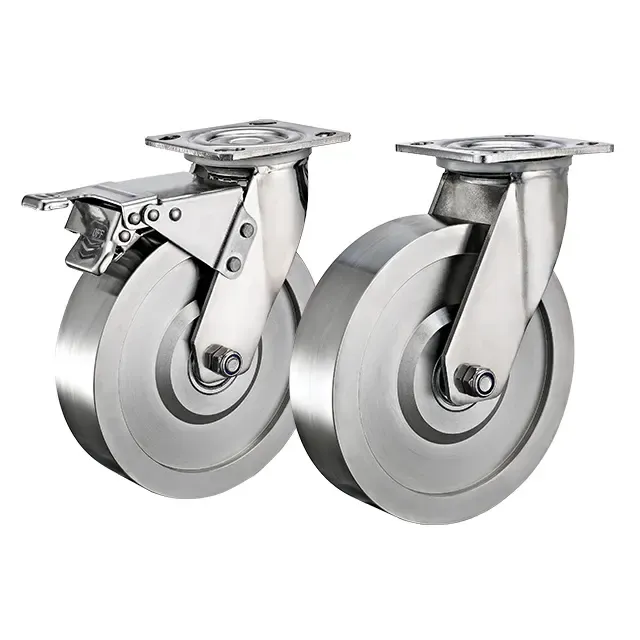
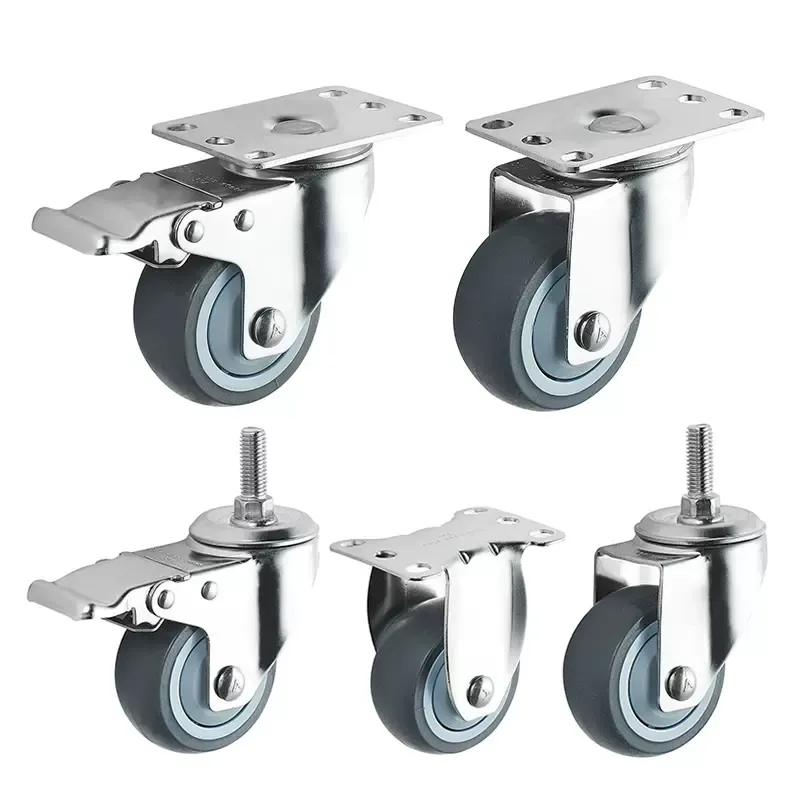

- 형질: 강도와 부식 저항을 결합합니다.
- 응용 프로그램 : 위생 및 부식성이 중요하는 식품 가공, 해양 및 의료 환경에 자주 사용됩니다.
- 장점: 청소하기 쉽고 가혹한 조건에서 외관과 기능을 유지합니다.
PP (폴리 프로필렌)

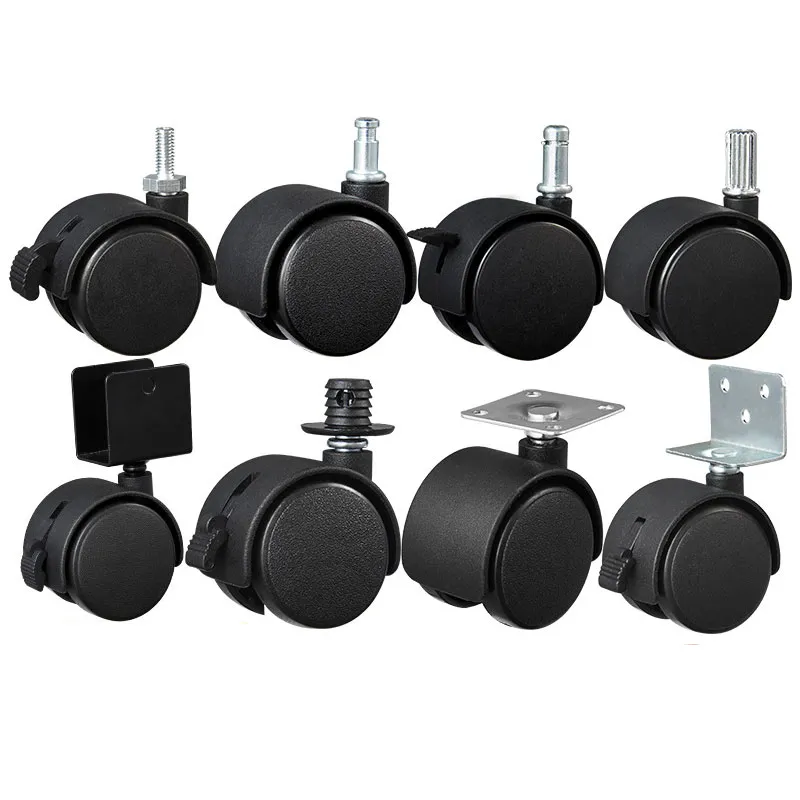
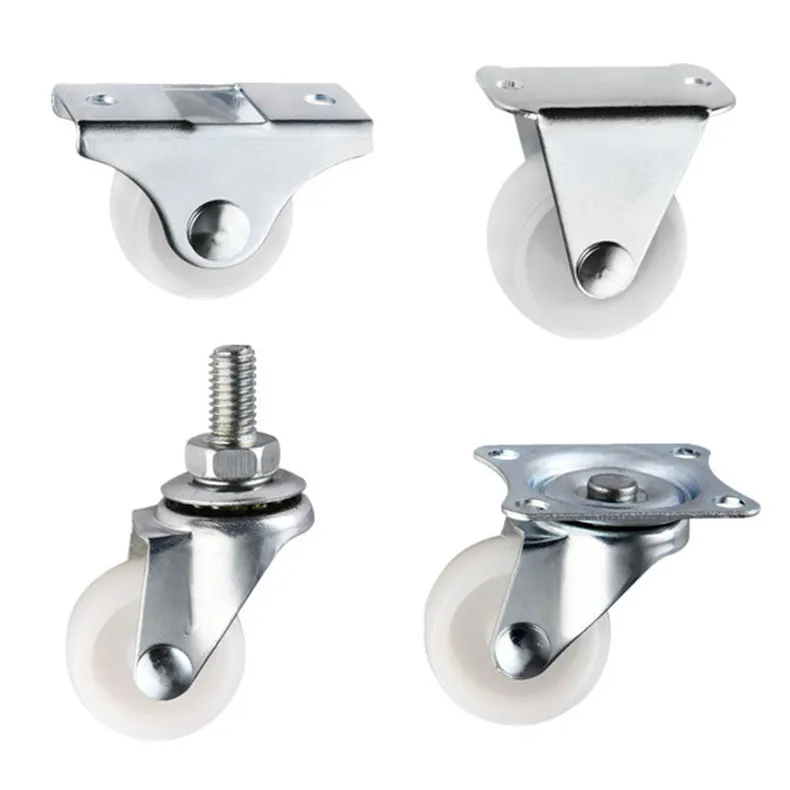
- 형질: 화학 물질에 대한 저항성이 좋은 가볍고 경제적 인 옵션.
- 응용 프로그램 : 사무 장비 또는 가벼운 가구와 같은 가벼운 응용 프로그램에 적합합니다.
- 장점: 물을 흡수하지 않으므로 습하거나 습한 조건에 적합합니다.
PVC 캐스터
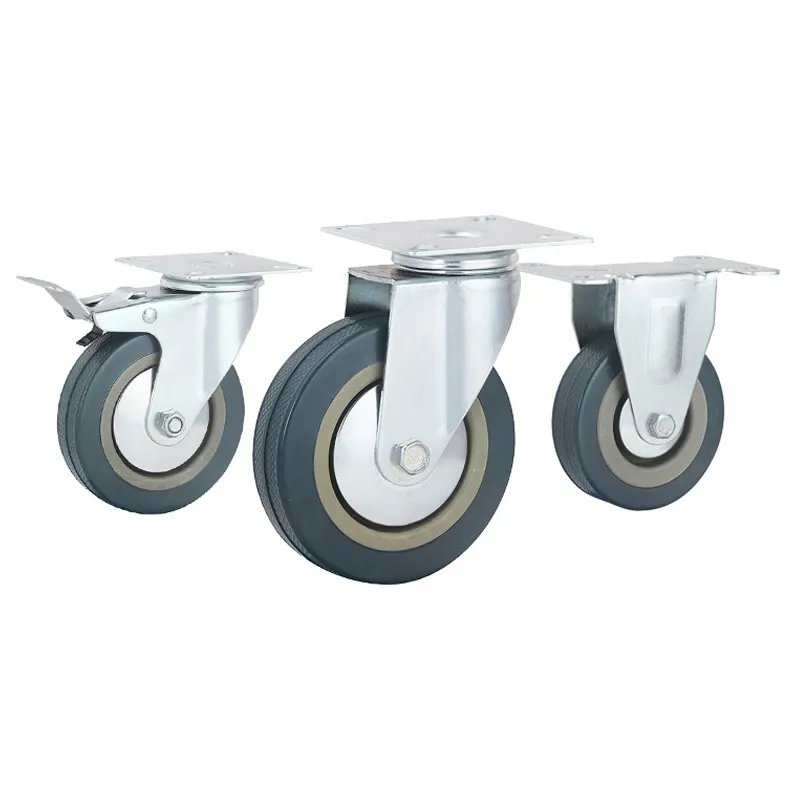
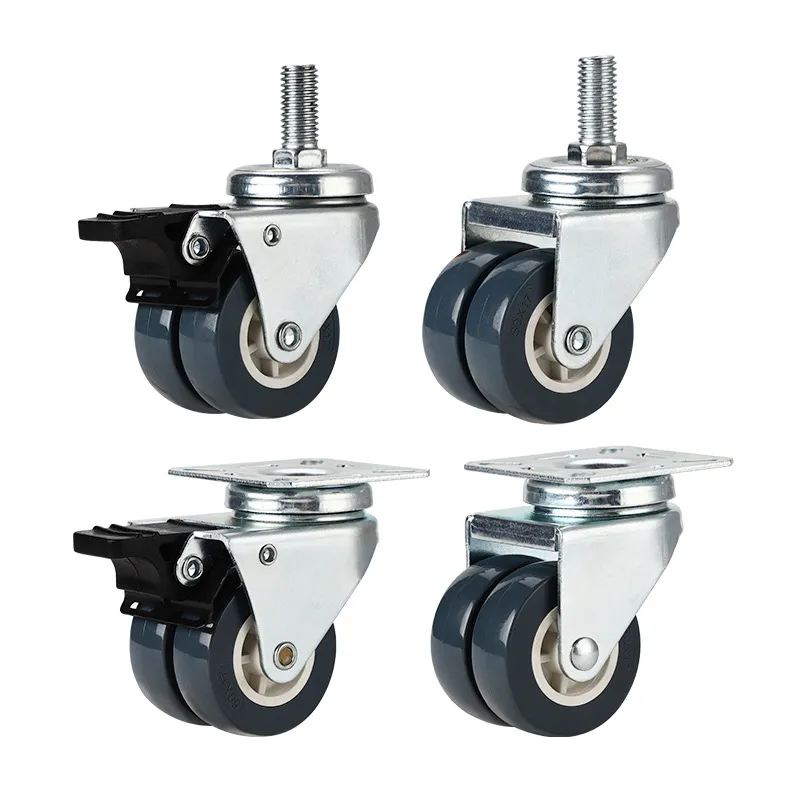
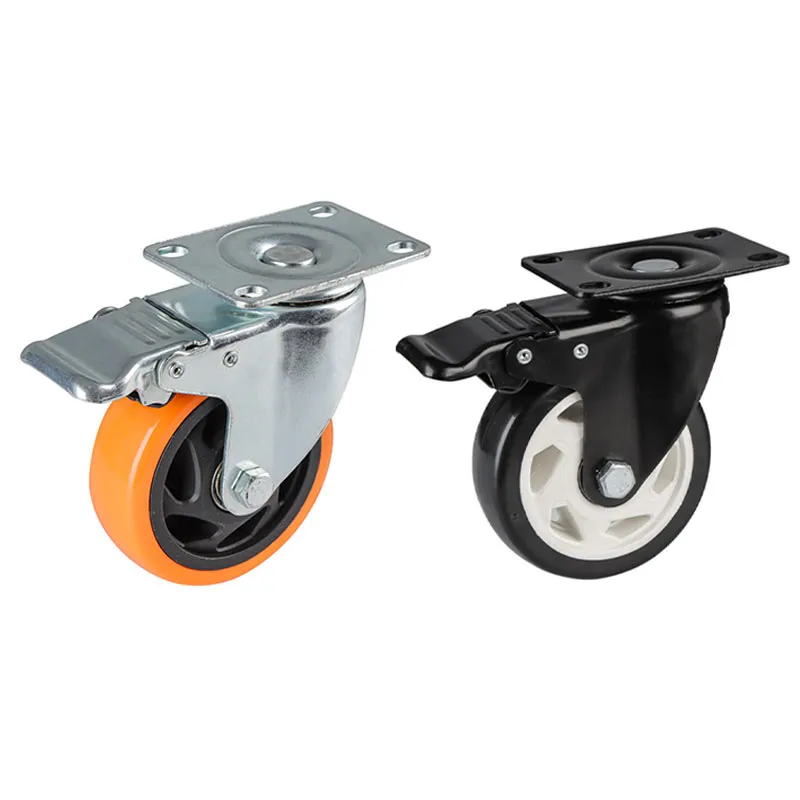
장점:
- 비용 효율성: PVC 캐스터는 일반적으로 폴리우레탄 캐스터보다 저렴합니다.
- 우수한 내화학성: 대부분의 산, 알칼리 및 알코올에 저항합니다.
- 경량: PVC 캐스터는 더 가벼워서 경량 용도에 적합합니다.
적용 가능한 바닥재 유형:
- 하중 요구 사항이 최소인 카펫이나 타일 바닥에 이상적입니다.
놋쇠


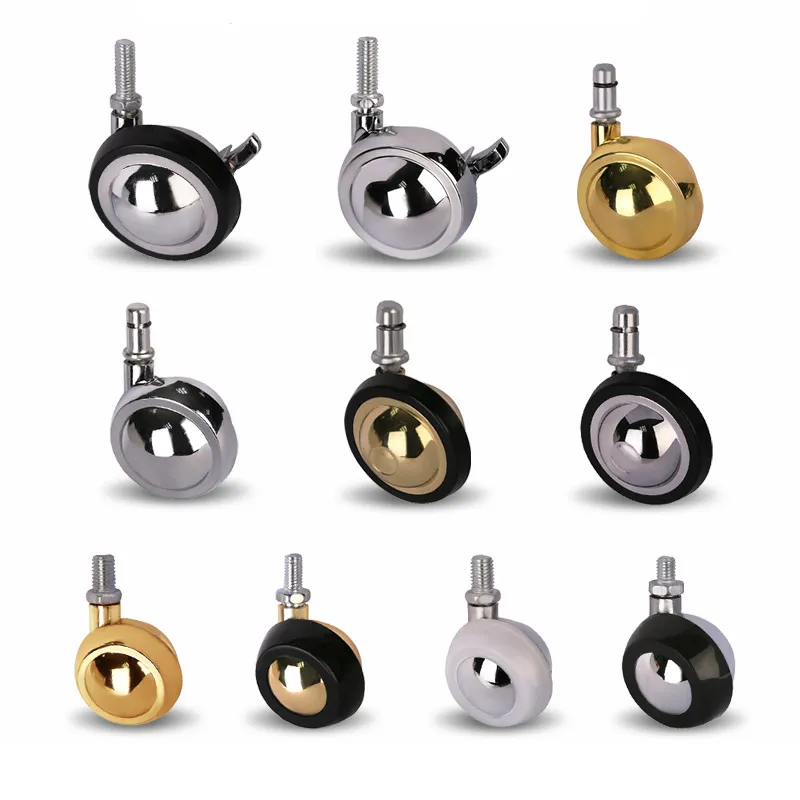
- 형질: 적당한 내구성을 가진 고전적인 미학을 제공합니다.
- 응용 프로그램 : 스타일이 기능만큼 중요한 장식 가구에서 일반적입니다.
- 장점: 부식에 대한 괜찮은 저항을 제공하면서 우아한 모양을 제공합니다.
주철

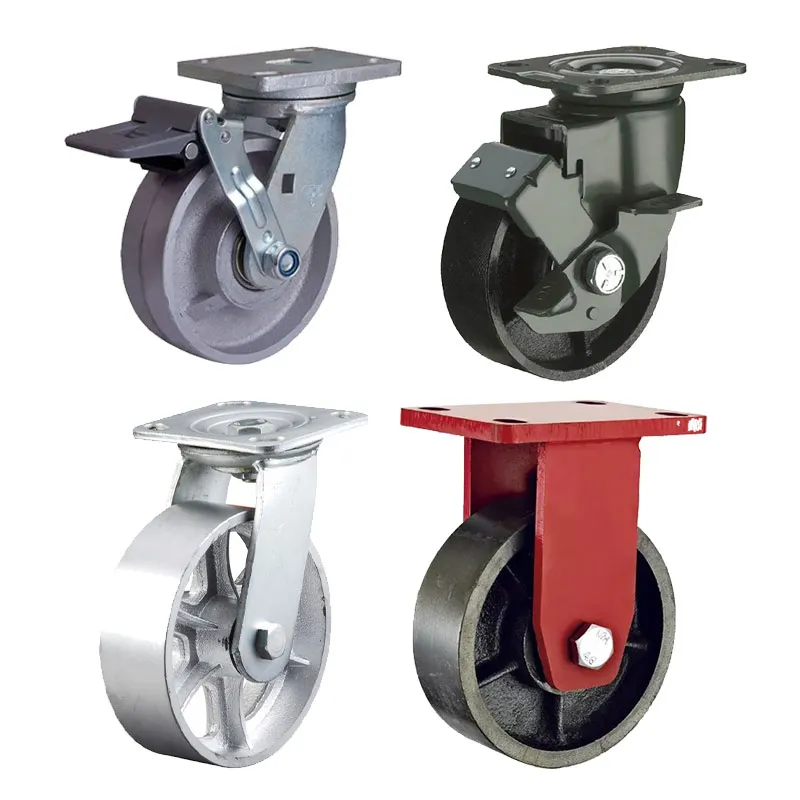
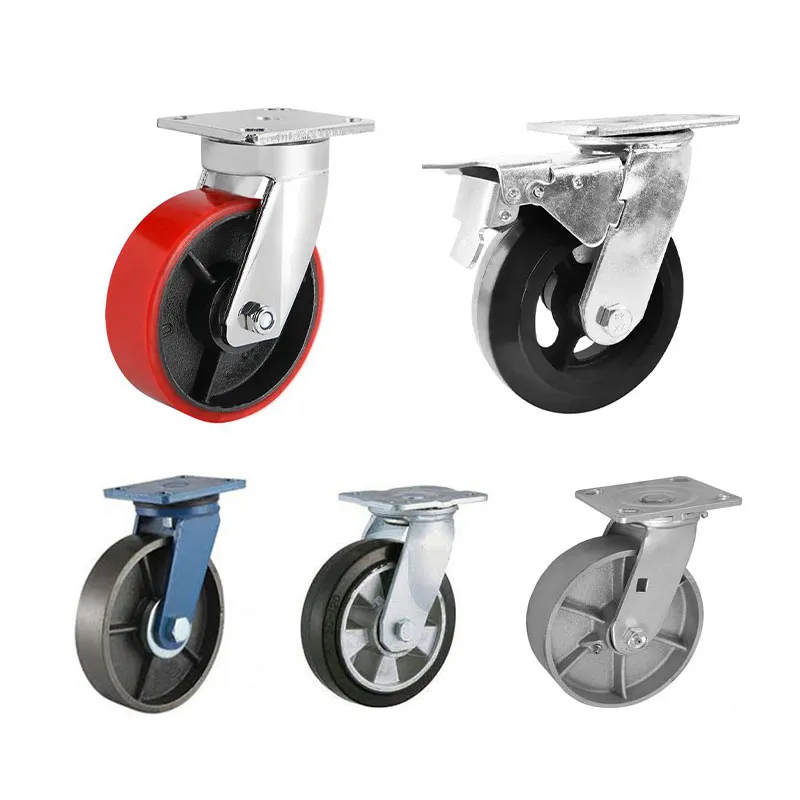
- 형질: 매우 강력하고 매우 무거운 하중을 지원할 수 있습니다.
- 응용 프로그램 : 대형 기계 나 상품을 운송하기 위해 중공업에서 주로 사용됩니다.
- 장점: 내구성이 뛰어나고 고온과 거친 표면에 노출 될 수 있습니다.
페놀
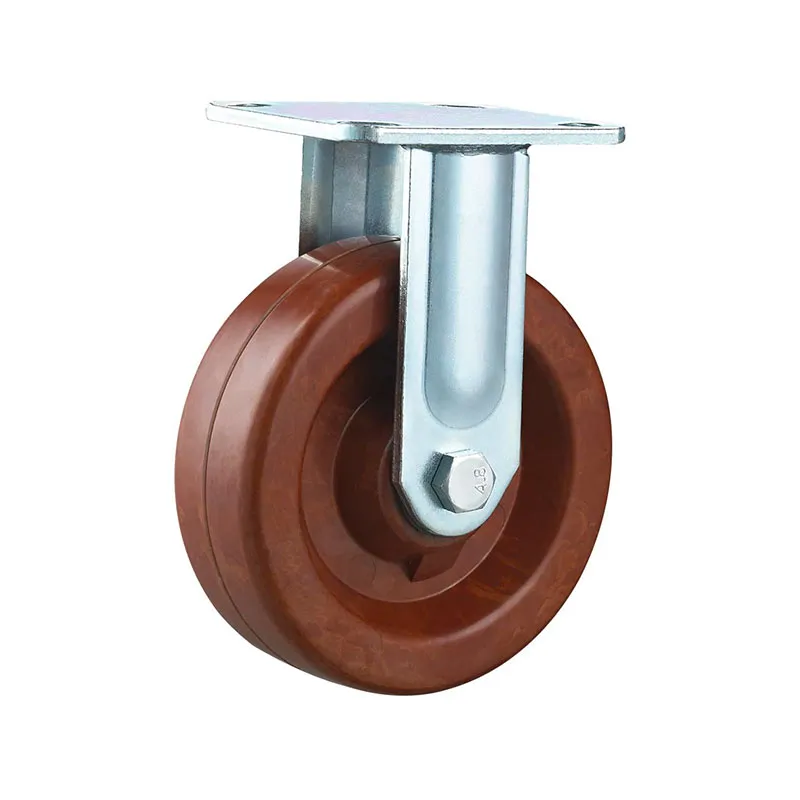
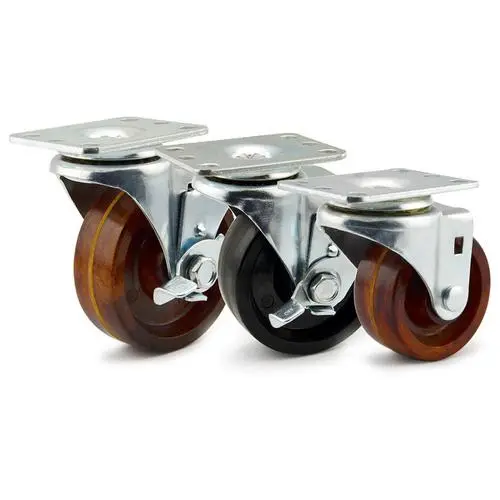
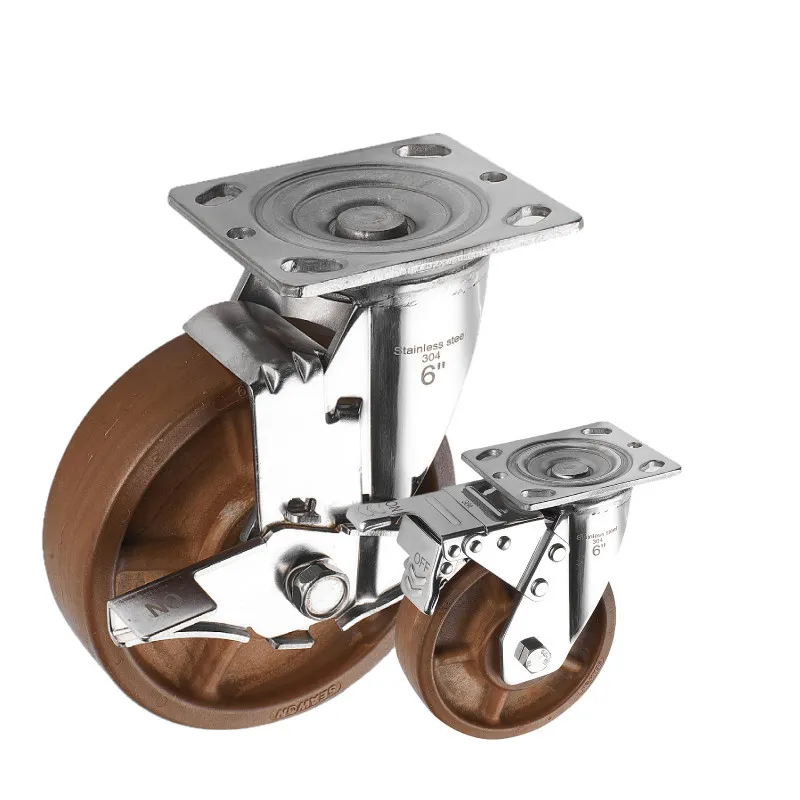
- 형질: 페놀 수지로 만들어진이 바퀴는 단단하고 충격, 열 및 화학 물질에 저항합니다.
- 응용 프로그램 : 바닥이 걱정되지 않는 산업 환경에 적합하며 내구성이 핵심입니다.
- 장점: 바닥을 표시하지 않고, 물, 기름, 그리스 및 일반적으로 사용되는 용매에 저항하지 않습니다.
이러한 각 자료는 고유 한 이점과 한계를 제공합니다. 선택은 부하 용량, 환경 조건 및 바닥 유형을 포함한 응용 프로그램의 특정 요구 사항에 따라 크게 달라집니다. 이러한 자료의 특성을 이해함으로써 캐스터의 최적의 성능과 수명을 보장하는 정보에 근거한 결정을 내릴 수 있습니다.
2. 부하 용량 별 분류
캐스터의 부하 용량은 안전성과 효율성을 보장하는 데 중요한 요소입니다. 다양한 캐스터는 다양한 중량 범위를 지원하도록 설계되었으므로 응용 프로그램의 특정 부하 요구 사항에 맞는 캐스터를 선택해야합니다. 다음은 일반적인 부하 범위 사양을 포함하여로드 용량을 기반으로 한 분류에 대한 확장 된 모습입니다.
가벼운 의무 캐스터
- 로드 범위 : 일반적으로 최대 250 파운드 (약 113 킬로그램)를 지원합니다.
- 형질: 이 캐스터는 가벼운 응용 프로그램을 위해 설계되었으며, 쉽게 기동성과 덜 강력한 구조를 제공합니다.
- 일반적인 용도 : 사무용 가구, 가벼운 트롤리 및 소규모 기계에 이상적입니다.
- 재료: 플라스틱, 가벼운 고무 또는 얇은 게이지 스틸과 같은 재료로 종종 만들어졌습니다.
중간 규모의 캐스터
- 로드 범위 : 일반적으로 250 ~ 750 파운드 (113 ~ 340 킬로그램)를 지원합니다.
- 형질: 유연성으로 강도의 균형을 유지 하면서이 캐스터들은 가벼운 의무보다 내구성이 뛰어나고 중간 정도의 가중치를 처리 할 수 있습니다.
- 일반적인 용도 : 병원 장비, 식품 서비스 카트 및 소매 디스플레이 장치에 적합합니다.
- 재료: 고무, 폴리 우레탄 또는 강화 플라스틱으로 일반적으로 제작됩니다.
고강도 캐스터
- 로드 범위 : 750 ~ 3,500 파운드 (340 ~ 1,587 킬로그램)의 하중을 지원하도록 설계되었습니다.
- 형질: 힘과 지구력을 위해 제작 된이 캐스터들은 상당한 무게를 처리 할 수 있으며 종종 강력한 디자인을 특징으로합니다.
- 일반적인 용도 : 대형 기계, 중장비 및 대규모 용기를 이동하기 위해 산업 환경에 사용됩니다.
- 재료: 일반적으로 고급 강철, 주철 또는 중형 폴리 우레탄으로 만들어졌습니다.
슈퍼 중부인 캐스터
- 로드 범위 : 3,500 파운드 (1,587 킬로그램)가 넘는 부하를 지원할 수 있으며 일부 모델은 20,000 파운드 (9,072 킬로그램)가 넘는 부하를 위해 설계되었습니다.
- 형질: 이들은 가장 강력한 캐스터로, 가장 높은 내구성과 하중 용량을 가진 가장 까다로운 응용 프로그램을 위해 설계되었습니다.
- 일반적인 용도 : 극도로 중장비, 대형 차량 또는 중요한 구조 부품을 이동하는 데 중공업에 필수적입니다.
- 재료: 강화 된 강철, 주철 및 특수 고용량 재료로 구성됩니다.
3. 마운트 방법에 의한 분류
캐스터의 설치 방법은 적절한 부착, 안정성 및 기능을 보장하기 위해 중추적입니다. 다양한 장착 유형은 다양한 응용 분야, 바닥 유형 및 이동성 요구를 충족시킵니다. 다음은 5 가지 일반적인 장착 유형의 캐스터에 대한 풍부한 모습입니다.
볼트 구멍 (구멍 상단)
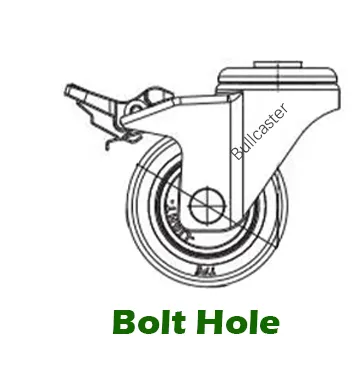
- 설명: 이 캐스터는 중앙 구멍을 통해 단일 볼트를 사용하여 장착됩니다.
- 형질: 안전하고 설치하기 쉬운 솔루션을 제공하며 빠른 교체 또는 조정에 이상적입니다.
- 응용 프로그램 : 카트, 트롤리 및 휴대용 기계와 같은 광대 중간 장비에서 일반적으로 사용됩니다.
- 장점: 설치를 단순화하고 빠른 장착이 필요한 다양한 응용 프로그램에 적응할 수 있습니다.
Circlip (삽입로드)

- 설명: 사전 드릴 구멍에 캐스터 스템을 고정하는 서클립 또는 스냅 링을 사용하여 장착했습니다.
- 형질: 쉬운 설치 및 제거로 안전한 착용감을 제공합니다.
- 응용 프로그램 : 소매 또는 디스플레이 장치와 같이 캐스터를 자주 교체하거나 제거 해야하는 장비에 이상적입니다.
- 장점: 최소한의 도구로 캐스터 교체 및 유지 보수를 쉽게 할 수 있습니다.
스레드 스템 (나사로드)
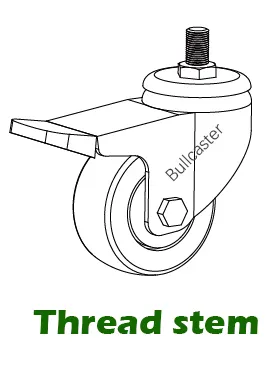
- 설명: 이 캐스터는 해당 리셉터클로 나사로 나사가 달린 줄기가 있습니다.
- 형질: 수직 및 수평 부하 모두에 적합한 매우 안전한 부착물을 제공합니다.
- 응용 프로그램 : 작고 안정적인 장착이 필요한 가구, 사무실 의자 및 장비에 널리 사용됩니다.
- 장점: 강력하고 안정적인 연결을 제공하며 공간이 제한된 응용 프로그램에 적합합니다.
스위블 플레이트 (플랫 플레이트)
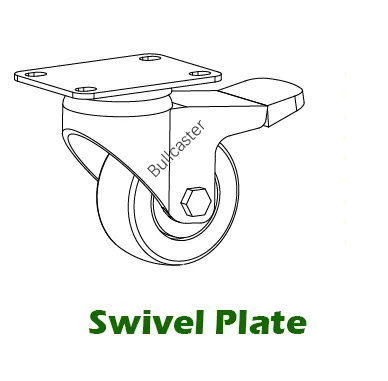
- 설명: 나사 나 볼트를위한 구멍이있는 평평한 플레이트를 사용하여 장착했습니다.
- 형질: 넓고 안정적인 장착 표면을 제공하여 체중과 응력을 고르게 분포합니다.
- 응용 프로그램 : 안정성이 중요한 산업용 카트, 기계 및 장비와 같은 중간 정도에서 중간 정도에서 중간 정도에서 일반적입니다.
- 장점: 더 무거운 하중에 적합한 강력하고 안전한 부착물을 제공합니다.
확장로드

- 설명: 캐스터를 고정하기 위해 관형 다리 또는 프레임 워크 내부로 확장되는 막대가 있습니다.
- 형질: 다양한 튜브 직경에 다목적이고 조절 가능한 적합성을 제공합니다.
- 응용 프로그램 : 전통적인 장착 옵션을 실현할 수없는 관형 가구, 병원 및 장비에 이상적입니다.
- 장점: 드릴링 또는 스레딩없이 중공 구조물에 보안 장착을 가능하게합니다.
각 캐스터의 마운트 방법 고유 한 이점을 제공하며 특정 유형의 장비 및 응용 프로그램을 위해 설계되었습니다. 올바른 장착 유형을 선택하는 것은 캐스터가 단단히 첨부되어 올바르게 기능하며 응용 프로그램에 필요한 이동성과 안정성을 제공하는 데 중요합니다.
4. 캐스터 브래킷 유형에 의한 분류
캐스터의 유형은 움직임 및 제어 기능을 결정합니다. 이 분류는 캐스터 회전 방식과 브레이크와 같은 추가 기능이 있는지 여부를 중심으로합니다. 다음은 다양한 회전 유형의 캐스터, 즉 스위블 캐스터, 강성 캐스터 및 브레이크 캐스터에 대한 확장 된 개요입니다.
스위블 캐스터

- 설명: 360도 회전을 허용하는 베어링에 장착 된 휠이 있습니다.
- 형질: 부착 된 장비가 방향을 부드럽게 변경할 수 있도록 탁월한 기동성을 제공합니다.
- 장점: 특히 단단한 공간에서 조향과 방향 변화의 용이성을 향상시킵니다.
- 디자인 변형 : 여기에는 잠금 장치 또는 추가 기능을위한 스프링로드 설계와 같은 기능이 포함될 수 있습니다.
- 추가의: 스위블 캐스터 괄호에는 여러 가지가 있습니다. 스위블 플레이트 유형에는 단일 경마장 및 더블 레이스 웨이가 포함됩니다. 일부 무거운 캐스터에서는 충격에 강한 디자인이있는 스위블 플레이트가 사용되며 스위블 잠금 장치가 장착되어 있습니다.
강성 캐스터 (방향 바퀴)

- 설명: 고정 된 휠 방향이있어 한 방향으로 만 움직일 수 있습니다.
- 형질: 직선 이동을위한 더 큰 안정성과 제어 기능을 제공합니다.
- 장점: 꾸준한 궤적을 유지하기 때문에 더 먼 거리에서 무거운 하중을 직선으로 운반하는 데 이상적입니다.
- 고려 사항 : 방향 변화의 제한은 회전하기에 충분한 공간이 필요합니다.
브레이크 캐스터

- 설명: 휠을 제자리에 고정시킬 수있는 제동 메커니즘이 장착되어 있습니다.
- 형질: 의도하지 않은 움직임을 방지하여 안전성과 제어를 제공합니다.
- 장점: 사용자가 장비를 제자리에 단단히 고정시켜 로딩, 언로드 또는 고정 시점 동안 안정성을 보장 할 수 있습니다.
- 디자인 옵션 : 브레이크는 단순 발가락 작동 잠금 장치에서 휠과 스위블 베어링을 모두 잠그는 더 복잡한 잠금 시스템에 이르기까지 다양합니다.
- 추가의: 캐스터 브레이크에는 여러 가지 유형이 있습니다. 자세한 소개를 확인할 수 있습니다 캐스터 브레이크 유형.
각 캐스터 유형의 고유 한 기능과 응용 프로그램을 이해하는 것은 특정 작업에 적합한 캐스터를 선택하는 데 중요합니다. 스위블 캐스터는 움직임의 유연성을 제공하고, 강성 캐스터는 직선 경로에서 안정성을 제공하며 브레이크 캐스터는 안전과 고정 제어를 보장합니다. 선택은 장비 나 가구에 필요한 이동, 제어 및 안정성의 특정 요구 사항에 따라 다릅니다.
5. 주요 사용 시나리오로 분류
캐스터는 하나의 크기에 맞지 않습니다. 그들의 디자인과 재료는 종종 특정 사용 시나리오에 맞게 조정됩니다. 이러한 시나리오를 이해하면 운영 및 환경 요구에 가장 적합한 캐스터를 선택하는 데 도움이됩니다. 다음은 주요 사용 시나리오로 분류 된 캐스터에 대한 향상된 개요입니다.
산업용 캐스터 휠
- 형질: 힘과 내구성을 위해 만들어졌습니다. 종종 PU, 나일론, 강철 또는 주철과 같은 무거운 재료로 만들어졌습니다.
- 응용 프로그램 : 공장, 창고 및 무거운 짐과 견고한 사용이 일반적 인 제조 공장, 창고 및 기타 산업 환경에 사용됩니다.
- 특수 기능 : 여기에는 높은 하중을 유지하는 용량, 화학 물질에 대한 저항 및 가혹한 조건을 견딜 수있는 능력이 포함될 수 있습니다.
의료 캐스터
- 형질: 원활한 작동, 위생 및 감소 된 노이즈의 우선 순위를 정합니다.
- 응용 프로그램 : 병원 및 클리닉, 환자 침대, 의료용 카트 및 이동식 의료 장치와 같은 장비에서 일반적입니다.
- 특수 기능 : 일반적으로 청정하기 쉬운 표면, 항균 특성 및 TPR 휠과 같은 비 마킹 재료는 병원 바닥을 보호합니다.
가구 바퀴
- 형질: 기능을 미학과 결합합니다. 종종 작고 집이나 사무실 장식과 혼합되도록 설계되었습니다.
- 응용 프로그램 : 사무실 의자, 휴대용 테이블 및 장식용 가정용 가구에 사용됩니다.
- 특수 기능 : 가구 디자인을 보완하기위한 다양한 마감재와 스타일과 바닥 보호를위한 부드러운 트레드가 포함될 수 있습니다.
트롤리 휠
- 형질: 부드러운 롤링과 쉬운 기동성을 위해 설계되었습니다.
- 응용 프로그램 : 쇼핑 카트, 수하물 트롤리 및 음식 서비스 카트에서 발견됩니다.
- 특수 기능 : 조용한 작동 및 바닥 보호를 위해 고무 또는 폴리 우레탄과 같은 재료가있는 가벼운 가벼운.
충격 흡수 캐스터
- 형질: 충격을 흡수하고 진동을 줄이는 메커니즘이나 재료가 장착되어 있습니다.
- 응용 프로그램 : 전자 장비 또는 실험실 기기와 같은 진동에 민감한 섬세한 품목 또는 장비를 운송하는 데 이상적입니다.
- 특수 기능 : 여기에는 스프링로드 디자인 또는 진동 감쇠를위한 특수 트레드 화합물이 포함될 수 있습니다.
선적 컨테이너 캐스터
- 형질: 무거운 용기를 지원하고 배송 및 취급의 엄격함을 견딜 수 있도록 제작되었습니다.
- 응용 프로그램 : 대형 운송 컨테이너, 저장통 및 중장비 재료 취급 장비에 사용됩니다.
- 특수 기능 : 고르지 않은 표면에서 더 쉽게 움직일 수 있도록 높은 하중 기반 용량, 내구성 및 종종 큰 휠 직경.
게이트 휠
- 형질: 큰 게이트와 문을 지원하도록 설계되어 부드러운 개구부와 닫기를 용이하게합니다.
- 응용 프로그램 : 대형 산업 게이트, 차고 문 또는 대형 주거용 게이트에서 일반적입니다.
- 특수 기능 : 내구성있는 구조는 무거운 게이트의 무게를 지니고 종종 야외 사용을위한 기상 내성 재료를 갖추고 있습니다.
각 유형의 캐스터는 특정 요구 사항 및 환경 조건을 충족하도록 설계되었습니다. 이러한 분류를 이해하면 특정 응용 프로그램에 적합한 캐스터를 선택하는 데 도움이됩니다.
ⅲ. 올바른 유형의 캐스터를 선택하는 방법은 무엇입니까?
귀하의 요구에 맞는 적절한 캐스터를 선택하려면 몇 가지 요인을 고려해야합니다. 캐스터를 선택할 때 명심해야 할 몇 가지 핵심 사항은 다음과 같습니다.
1.로드 요구 사항
- 부하 용량 평가 : 가장 중요한 것은 캐스터가 지원하는 데 필요한 무게입니다. 여기에는 물체의 무게와 운반 할 수있는 추가 하중이 포함됩니다.
- 안전 마진 : 안전과 장수를 보장하기 위해 항상 최대 부하보다 높은 용량을 가진 캐스터를 선택하십시오.
- 캐스터로드 요구 사항을 당사로 계산하십시오 온라인 캐스터로드 계산기
2. 재료 적합성
- 환경 호환성 : 사용 환경은 재료 선택에 중요한 역할을합니다. 화학 물질, 수분, 극한 및 바닥 조건에 대한 노출과 같은 요인을 고려하십시오.
- 재료 특성 :
- 조용한 작동 및 바닥 보호를 위해서는 고무 또는 폴리 우레탄이 이상적 일 수 있습니다.
- 화학 물질 또는 수분이있는 환경에서는 스테인레스 스틸 또는 나일론이 더 적합합니다.
- 무거운 산업용으로 강철 또는 주철과 같은 재료는 높은 하중과 거친 조건을 견딜 수 있습니다.
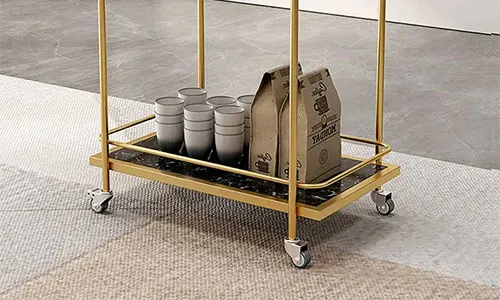
3. 캐스터 조합
- 이동성 및 안정성 균형 : 일반적인 설정은 스위블 캐스터와 고정 된 캐스터를 결합하는 것입니다. 예를 들어, 2 방향 휠 (고정)과 2 개의 브레이크 휠 (스위블)은 기동성과 제어를 잘 혼합 할 수 있습니다.
- 응용 프로그램 세부 사항 : 응용 프로그램의 특정 조작 요구를 고려하십시오. 예를 들어, 단단한 공간에서는 모든 스위블 캐스터가 더 실용적 일 수 있습니다.
4. 경제적 고려 사항
- 비용 효율성 : 요구 사항을 충족하는 몇 가지 캐스터 유형이있을 수 있지만 이익 비용 비율을 고려해야합니다.
- 장기 가치 : 더 저렴한 옵션이 장기적으로 항상 비용 효율적이지는 않을 수 있습니다. 내구성 및 유지 보수 요구 사항을 고려하십시오.
5. 추가 기능
- 브레이크 및 잠금 장치 : 안정성이 중요한 응용 분야의 경우 제동 또는 잠금 장치가있는 캐스터를 고려하십시오.
- 특수 기능 : 충격 흡수와 같은 기능은 섬세한 장비에 중요 할 수 있지만 병원이나 사무실 환경에서는 소음 감소가 필수적 일 수 있습니다.
이러한 요소를 신중하게 고려하면 응용 프로그램에 가장 적합한 캐스터 유형을 선택하여 효율성, 안전 및 비용 효율성을 보장 할 수 있습니다. 올바른 선택은 움직일 수있는 장치의 기능을 향상시킬뿐만 아니라 캐스터와 작동하는 바닥의 수명에도 기여합니다.
ⅳ4 : 요약
이 포괄적 인 가이드에서는 재료, 용량, 설치 방법, 특정 유형 및 사용 시나리오를 탐구하는 다양한 유형의 캐스터를 탐색했습니다. 이러한 분류를 이해하는 것은 산업, 의료, 가구 또는 기타 응용 프로그램에 관계없이 특정 요구에 적합한 캐스터를 선택하는 데 중요합니다. 올바른 캐스터의 선택에는 부하 요구 사항, 재료 적합성, 캐스터 조합 및 경제적 요인을 고려하여 효율성, 안전 및 비용 효율성을 보장합니다.
불캐스터 캐스터 제조의 혁신과 품질의 최전선에 서 있습니다. 우리의 광범위한 제품은 다양한 산업 분야의 고객의 다양한 요구를 충족 시키도록 설계되었습니다. 캐스터 기술에 대한 전문 지식을 바탕으로 제품뿐만 아니라 고유 한 요구 사항에 맞는 솔루션을 제공합니다.

비즈니스를위한 완벽한 캐스터 솔루션을 찾고 계십니까? 더 이상 Bullcaster를 보지 마십시오. 우리 팀은 운영 요구 및 예산에 맞는 최고의 캐스터를 선택하는 데 도움을 줄 준비가되었습니다. 우리는 다음과 같이 제공합니다.
- 전문가지도 : 지식이 풍부한 팀은 광범위한 제품 범위를 탐색하여 응용 프로그램에 이상적인 일치를 찾는 데 도움이됩니다.
- 맞춤 솔루션 : If you have specific requirements, we can provide custom-designed casters to meet your unique needs.
- 품질 보증: With Bullcaster, you can be assured of receiving products that are of the highest quality, ensuring durability and reliability.
불캐스터에 문의하기 today to discuss your needs and let us help you roll towards efficiency and success!


